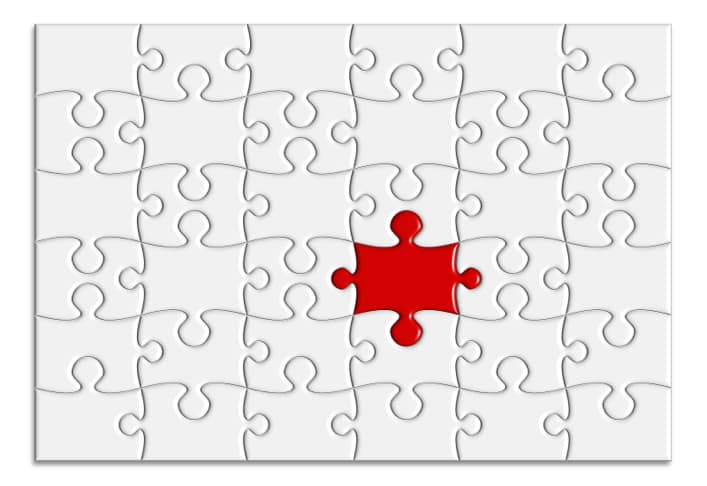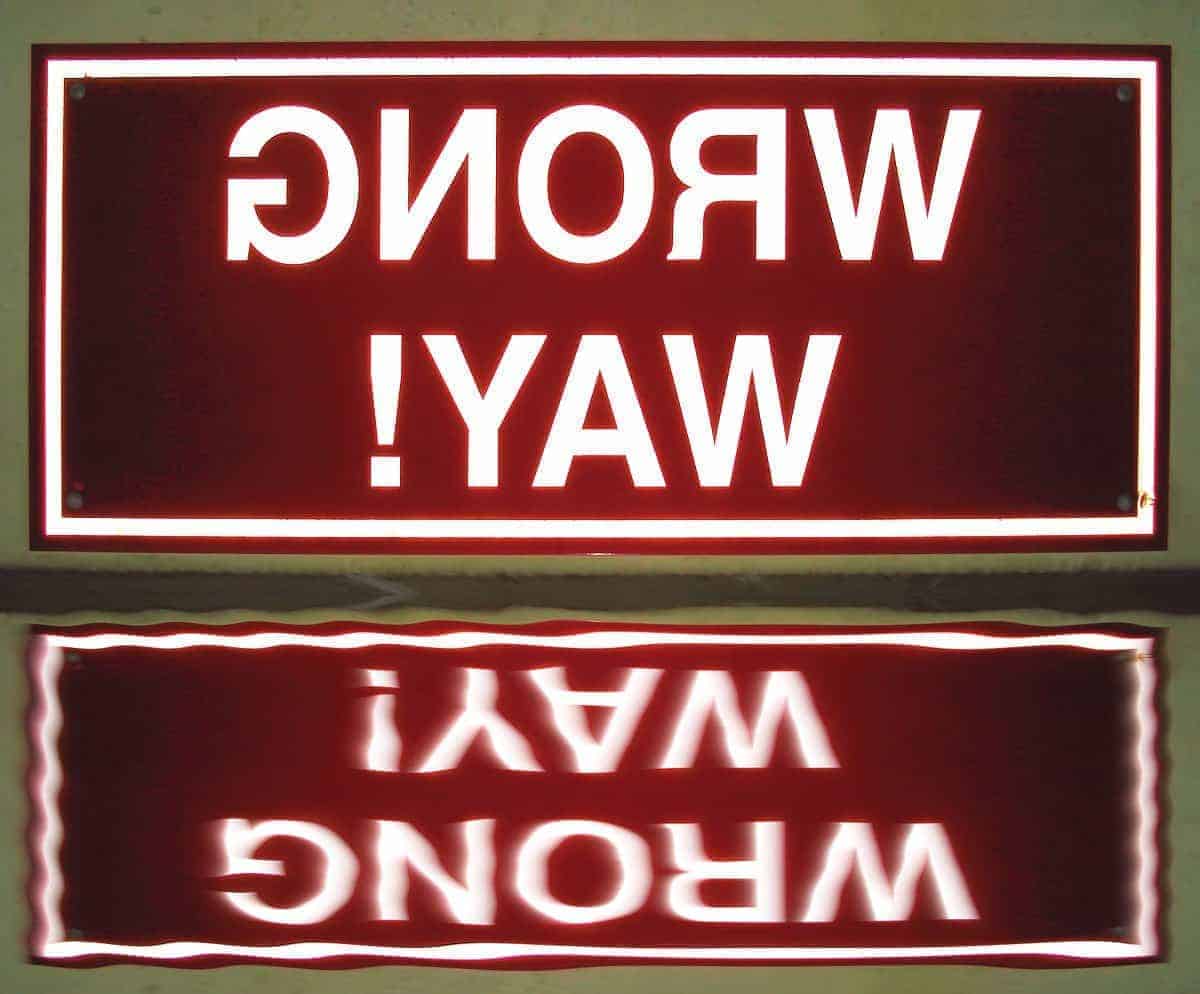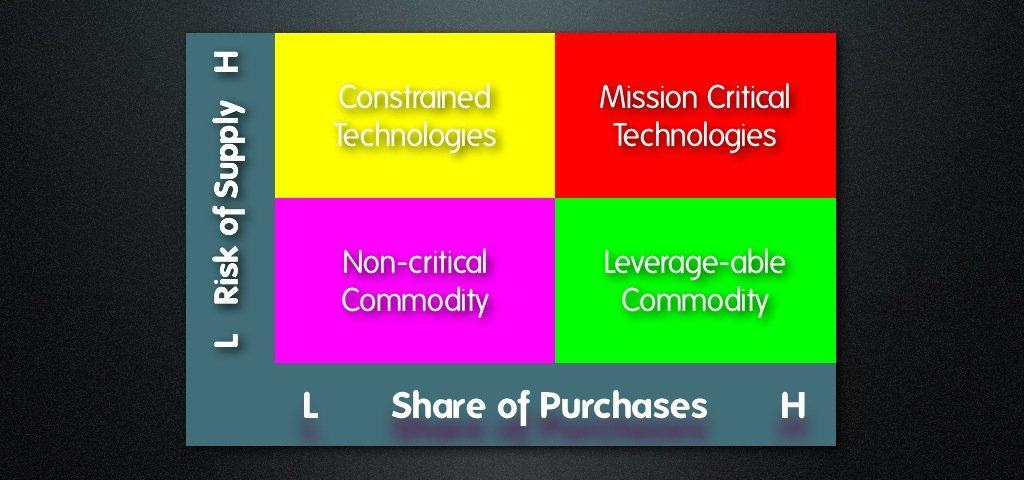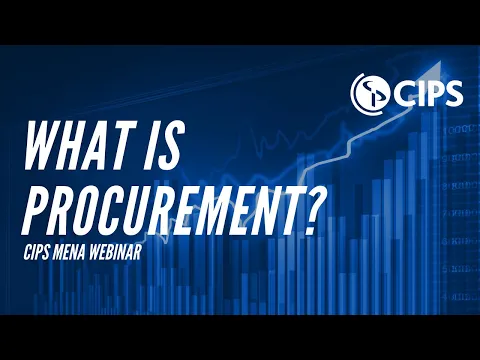A well managed, properly focused and appropriately measured and incented procurement function can drive enormous benefits to the business.
Leon Shivamber

How To Buy Your Way To Better Profits!
CEOs are becoming more aware of the value that a strong procurement function can bring to their company. And report after report of massive cost reductions or improvements in quality and service, as well as shorter time to market, suggests that such interest is well justified.
Great procurement organizations are deeply integrated with the rest of the supply chain management function. They collaborate with other functions and with their suppliers to drive broad cost reductions. However, to be most effective, these organizations ensure that the best talent is aligned against each strategic segment of procurement expenditures, even if this means outsourcing some of their function.
Leading organizations also recognize that information is more critical than any organizational structure; as a result, their technology investments are focused and frequently deliver value upon implementation, in contrast to many other misguided procurement automation efforts.
Finally, these organizations recognize that they cannot build a competitive business without competitive suppliers. Therefore, they make every effort to ensure that relationships are structured so that total system-wide costs are reduced collaboratively, as these collaborations can deliver the greatest improvements in procurement.
An Introduction
Bayer Corp. saved $125 million in costs between 2001 and 2002 by improving procurement, in some cases taking radically different approaches (such as using sole-source contracts for strategic chemicals) than their previous strategy.
Dow Chemical saved $150 million through strategic sourcing in the two years following its 2001 acquisition of Union Carbide.
These stories propelled the procurement function into the spotlight of corporate performance improvement levers in the early 2000s.
Since then, there have been numerous other stories from senior executives in every industry, all over the world, indicating that procurement remains a very fruitful source of cost reduction, both short- and long-term.
PURCHASING magazine recently published the results of a poll of Fortune 1000 purchasing executives, in which 72 percent of respondents named direct material cost reductions as one of their top three priorities.
Nonetheless, in the face of challenging economic conditions, weakened suppliers, and low interest rates, many more businesses fail to capitalize on these opportunities to reduce costs and long-term supply risk significantly.
Why is procurement still so underutilized, and what should be done to change that?
Why is procurement still so under-leveraged, and what should be done about it? Please Click To TweetSome background
Surprisingly, few senior executives genuinely understand the scope of procurement.
The approach taken is that “it’s a necessary function that just needs to be measured and incentivized appropriately, and the right things will get done.”
When the value is recognized, executives are frustrated because they cannot achieve better results than they intuitively believe are available.
Unfortunately, many companies’ procurement functions are poorly focused and, as a result, grossly underappreciated.
Procurement professionals are required to spend far too much of their valuable time on trivial aspects of running the business. As a result, they deliver far less than their potential.
In our experience, the actual value of procurement efforts can only be realized when viewed through a strategic lens and within an integrative framework.
The real value of procurement efforts can only be achieved when viewed with a strategic lens and within an integrative framework. Please Click To TweetOnly when the procurement role is viewed as a strategic asset to be used more effectively will the promises of strategic sourcing be truly deliverable.
The reality is that looking more cross-functionally across the business yields far more benefits than simply sending the procurement function off to cut purchase costs. Before getting the most out of procurement, we must remember how procurement helps or hurts the underlying business. Then, and only then, will we have a genuine appreciation for the magnitude of available opportunities, and we will be able to start putting plans in place to capitalize on these lucrative benefits.
How Does Procurement affect the business?

Let’s face it: we all agree that procurement impacts costs, whether it’s purchasing materials, finished goods, or services like advertising or temporary workers.
What is not universally accepted or understood is how procurement affects a slew of other critical aspects of the business that are not immediately apparent when looking at the price paid for an item:
Procurement impacts several other dimensions that are not apparent when only looking at the price paid.
- Procurement has an impact on capital costs and obsolescence. Buy too much to get a lower upfront unit cost, and you’ll end up with higher financing, warehousing, and support costs. In addition, if the extra items are not used, the material costs must be written off unless they are sold to another buyer.
- Procurement affects the quality of your products or services. No company can create high-quality products from shoddy materials.
- Procurement has an impact on your company’s responsiveness or flexibility. For example, when materials fail to arrive on time due to poor supplier selection or inadequate supplier management, customer demand can suffer, entire factories can come to a halt, and revenue targets can be missed.
- Procurement can help you gain a competitive advantage. By selecting suitable suppliers, you can gain early access to new technology, processes, and products. In addition, great procurement functions find ways to collaborate with suppliers to reach the market faster, at a lower total cost and higher quality.
Yes, a well-managed, properly focused, and appropriately measured with balanced key performance indicators (KPI) and incentivized procurement function can provide significant benefits to the business.
Even organizations that are well-managed and aware of the importance of procurement are discovering significant areas for improvement.
No company can create high-quality products from shoddy materials. Please Click To TweetImportant Note About These Findings
While writing this piece, I have emphasized business procurement and its challenges. It should be clear that the findings and opportunities described here apply equally to all procurement and purchasing aspects. They apply to public procurement, direct procurement, indirect procurement and should be viewed in that context. Some elements of the recommendations must be tailored as needed.
Even those organizations that are well managed and attuned to the importance of procurement are finding significant opportunities to improve.
Leon Shivamber

Common Missteps
Even those organizations that are well managed and attuned to the importance of procurement are finding significant opportunities to improve.
Even those organizations that are well managed and attuned to the importance of procurement are finding significant opportunities to improve. Please Click To TweetWhy is this? Many procurement organizations fail to achieve their potential by making one or more of five common missteps:
- First, focus on purchase price rather than total costs.
- Reliance on simplistic Pareto rather than operational segmentation, and focus on reducing purchasing costs by automating procurement.
- Emphasize negotiations and supplier leverage rather than broader cross-functional opportunities.
- Emphasize structural changes (centralize versus decentralize) rather than develop process capability.
- Under-invest in procurement organization, and then involve purchasing in everything.

Misstep 1: Focus on the purchase price
The concept of an economic order quantity (EOQ), which balances transaction and inventory costs, has been around for quite some time. Furthermore, many purchasing organizations are aware of its utility, and buyers have been trained in its use.
Unfortunately, it is rarely used nowadays. And even if it is, the simplifying assumptions used only serve to reduce the potential benefits.
With the introduction of the EOQ, everyone realized that the purchase price was only one of many variables and actual costs that should be considered in every purchasing decision.
The EOQ teaches purchasing organizations that if they buy less frequently (in larger quantities), they may experience price breaks that higher inventory costs must offset (the larger quantities would last longer).
As a result, procurement functions innovated and created the annual purchase contract, which establishes a base price for the quantity purchased over the year. At one level, they had minimized one of the significant tradeoffs built into EOQs, allowing them to disregard its application.
The next step was to reduce inventory (lower purchase price and lower inventory simultaneously) by having products shipped in more frequently. But, again, other transactional costs were lost or ignored during this process.
Since prices did not fluctuate with purchased quantity, one distributor switched from monthly to weekly deliveries to reduce inventory. As a result, its warehouse costs skyrocketed, far outweighing the inventory savings.
Customers nowadays expect suppliers to replenish products far more frequently than the transactional-cost-increase to inventory-cost-reduction tradeoff would suggest.
The reality is that all purchases cost far more than the invoice price.
For example, someone in the organization may be required to follow a purchasing process with a myriad of procurement activities: request a purchase, review potential suppliers, locate a preferred vendor or decide on multiple bidders, create a purchase requisition or create a supplier contract, place an order, receive the order, deliver the item to the requestor, and receive, record, and pay an invoice each time something is purchased. If there are procurement contracts, handle all aspects of contract management. And that’s assuming you get what you asked for, that it doesn’t need to be inspected, and that there are no service issues.
These costs are not insignificant in many organizations, but they are ignored in the procurement equation.
All purchases cost far more than the price paid on the invoice. Please Click To TweetMisstep 2: Simplistic Pareto and misguided automation
Technological progress has merely provided us with more efficient means for going backwards
Aldous Huxley
During the 1950s, General Electric executives developed the ABC classification methodology (the most common Pareto) to help focus their efforts on the small percentage of items that account for a large portion of their sales.
As the utility of this methodology became clear, it was quickly translated and applied to inventory management and procurement. The procurement function could achieve the greatest benefits by focusing on a few items that accounted for most of its purchases.
Professional purchasing organizations were formed and focused on “strategic” and direct purchases of A and B items, while C items were left to the users. Plant maintenance purchased their supplies, administrators purchased office supplies, and a wide range of “non-strategic” or indirect purchases was excluded from the procurement function.
As a result, large portions of purchases are still made with less rigor and control outside of the procurement function today.
Let’s face it: most procurement departments spend a significant amount of time managing and ensuring that their A and B items are correctly priced. But what about those C items, or even non-production purchases, which frequently go around the procurement function?
A quick review of C items at one industrial company revealed 50 to 75 percent higher prices than the market. Therefore, a 25% price reduction on C items (30% of total purchases) would result in more savings than the price reductions targeted in the remainder of the procurement pool (the other 70 percent).
In some cases, businesses have recognized this opportunity and worked hard to gain control of the process. At the very least, the procurement function would be in charge of oversight. However, due to the large number of items purchased, the transactions became overwhelming. For many, the simple solution has been process automation, and more recently, eProcurement (an even more advanced form of process automation). Requisition, approval, order, and payment processes were moved online, lowering the organizational costs associated with transactional purchasing.

Unfortunately, many of these initiatives were poorly planned and have failed to deliver on their promises.
In a recent report, Forrester Research stated that many implementers simply automated existing processes for approving requisitions, failing to achieve the full benefits.
The true benefits of a highly automated procurement cycle, of course, do not come from simply installing an application but rather from a complete process redesign.
According to Gartner Group, it will take three years to bring 50 percent of white-collar MRO procurement spending under the control of eProcurement applications and another three years to reach 80 percent of spend.
That is not to say that automation or eProcurement aren’t beneficial. These are, however, solutions that should be implemented within a strategic framework and applied to items where all costs can be reduced. Furthermore, to maximize the value of these solutions, processes that can reduce transactions and transaction costs without raising prices must be redesigned.
Misstep 3: Focus on leveraging suppliers
According to a recent survey of purchasing managers, pursuing volume leverage across business units or locations is the second-most popular current cost-cutting strategy, trailing only work activity and staff reductions.
When Xerox set out to discover why its Japanese competitors could sell copiers for less than Xerox’s manufacturing cost in 1979, it coined the phrase “competitive benchmarking.” During this process, it was discovered that Xerox rejected ten times as many products as its competitors and took twice as long to bring products to market.
As a result, the “Leadership through Quality” program was born. The realization that, with nine times as many suppliers as the Japanese, Xerox would be unable to drive significant improvements without significant improvement was at the heart of this program.
Benchmarking, total quality, and supplier reduction quickly became the mantras of any successful management program.
One of the remarkable side effects of the supplier reduction program was a significant cost reduction as each supplier became increasingly crucial to the company and the company to that supplier. In addition, significant benefits were created for both parties as a result of co-dependency.
One of the extraordinary side effects of a supplier reduction program is a significant reduction in cost as each supplier becomes that more important to the company, and the company to that supplier. Please Click To TweetThe cause and effect have been forgotten two decades later.
Today, procurement organizations believe they have a right to lower prices if they buy more, even if costs remain constant.
Let’s face it: generations of managers have been taught that the best way to get lower supplier costs is to be a significant customer with the ability to dictate terms. To achieve this benefit, entirely new types of collaborative purchasing organizations have been created. And some distribution industries have become more consolidated for the consolidators to become larger and wield more power over their suppliers.
GM’s purchasing in North America was led by José Ignacio Lopez de Arriortua between 1992 and 1993, and he is credited with saving the company $4 billion in expenses.
Unfortunately, he is also blamed for causing significant damage to GM’s long-term supplier relationships and competitiveness, an impact (believed to be greater than the savings) that has taken nearly a decade to reverse. López focused his teams on price, and competitive bidding, requiring at least ten bids on each major item.
He would frequently rip up existing contracts and instruct suppliers to resubmit their winning contract bid with price reductions in the double digits. And he told these suppliers that GM accounted for a sizable portion of the company’s sales and that the company would be long bankrupt by the time the supplier’s grievance reached a court hearing.

Across town, Chrysler executives took a different approach. They prioritized long-term partnerships over short-term price concessions.
Chrysler implemented systems-oriented procurement, which prioritized suppliers based on their ability to contribute to the entire product development and manufacturing value chain.
The results? Chrysler’s product development cycle time shrunk, and they were able to launch a succession of hit cars, while GM’s efforts stalled in comparison.
To make matters worse, Lopez left GM and took all his prices to Volkswagen, leaving behind the disastrous supplier relationships. As a result, GM’s price cuts were only temporary.
Do you believe the Lopez case is an isolated incident?
Today, the newest tool in the buyer’s arsenal aimed at suppliers is a “reverse auction,” a process that pits suppliers against each other in a bid to keep their previously earned business with the customer, just as Lopez did with at least ten bids.
What’s the distinction? Web accessibility makes it less personal and much faster.
General Electric, seeking to achieve some of the 10 to 30% cost reductions promised by reverse auctions in its electronics components, discovered that its best suppliers refused to participate in the reverse auction they required.
For GE to achieve anything close to its anticipated benefits, these suppliers would have to slash their existing margins (10 to 20%). What about the services and tight integration that GE’s factories receive? Wasn’t that worth something?
GE was forced to back down from its demand that electronic component suppliers be chosen through a reverse auction.
Focusing on price guarantees that the limited interaction between buyer and supplier will be adversarial; forget about figuring out how to save money or collaborate.
Procurement strategists understand that focusing on price or volume leverage is a short-term strategy that will lead to a vicious cycle of low price, followed by lower cooperation, lower quality, lower service, and lower flexibility. While focusing on price or volume leverage can result in short-term cost savings, experience has shown that there are frequently far more fruitful approaches that lead to deeper and more sustainable procurement cost savings.
Procurement strategists know that a focus on price or volume leverage is only a short-run strategy leading to a vicious cycle of low price, followed by lower cooperation, reduced quality, reduced service, and lower flexibility. Please Click To TweetMisstep 4: Change structure
In 1988 and 1995, the Center for Advanced Purchasing Studies (CAPS) conducted two studies of purchasing organizations. In those seven years, 119 (41 percent) of companies responding to both studies had changed their procurement organization structure. The number of people favoring decentralization was only marginally greater than those favoring centralization.
In a subsequent study of 15 specific change situations, researchers discovered that the changes were typically made to conform to a significant corporate change but were motivated by a desire to cut costs.
So, when a company decides to change its corporate structure, whether centralized or decentralized, it changes its procurement structure and discovers significant cost savings.
Why, then, is Gene Richter, former Chief Procurement Officer of IBM, so confident that “most procurement experts believe 15-20 percent of purchased materials and services can be saved (billions of dollars in a large company) by centralizing procurement and leveraging a far-flung corporation’s buying power” in an article for Purchasing Magazine?
All too often, frustrated managers and their consultants, recognizing the benefits of focusing on procurement and attempting to drive savings, will choose organizational structure changes as the primary solution, only to have those changes reversed years later.
That is not to say that structure isn’t a valuable change agent; however, getting procurement right is far more complex than switching to a centralized global organization or decentralized organization.
Consider how effective a centralized organization would be if engineering decisions were made locally. After all, when the engineering decision to include or exclude a component or supplier is made, the vast majority of procurement costs for production items are determined. Or, how effective is the local or factory-level group when global competitors manufacture the products being sourced?
Any company that changes its procurement structure solely to align with corporate structure changes fails to recognize the importance of other critical needs such as procurement strategy, systems, skills, and shared values (or goals) and will underachieve.
Getting procurement right is far more complicated than changing to a centralized or decentralized organization. Please Click To TweetMisstep 5: Under-invest in organization
Procurement costs money. So much money to some companies that they are willing to invest heavily in systems to reduce the non-value-added work associated with procurement, reducing staffing simultaneously, of course. And of course, there are significant portions of every procurement organization that are being under-utilized or used in non-value-added activities.
The reality is that many businesses waste the time of their procurement resources, which is a precious asset. A focus on systems and automation downplays the importance of skills, focuses on transactional rather than strategic aspects of procurement, and underutilizes the relationships developed between suppliers and the procurement organization.
A focus on systems and automation understates the importance of skills, focuses on the transactional aspects of procurement rather than the strategic, and under-leverages the relationships built between suppliers and the procurement… Please Click To Tweet
Where does the procurement organization fall in the hierarchy? How much money is spent on learning new skills, either through world-class talent or through training?
The typical procurement professional is a married male in his mid-40s with 15 years of purchasing experience. And training has been scarce over the last 15 years. As a result, only about a quarter of these professionals are certified purchasing managers (CPM).
In reality, many businesses will hire low-wage, low-skilled procurement personnel, preferring to train them on the job and then expect them to be worldly. Moreover, routine paperwork still consumes one-third of the procurement professional’s time despite all the money spent on automation.
Procurement must be good at strategic and executional issues to be effective, but firms hire with the assumption that most procurement challenges are executional.
Let’s face it: the skills, style, goals, and activities associated with strategic procurement are vastly different from those associated with execution procurement. Hiring into one and promoting into the other is based on the assumption that transactional experience teaches strategic thinking, analysis, and negotiation skills.
The skills, style, goals, and activities associated with strategic procurement are far different from those of execution procurement. Please Click To TweetOne large procurement organization with nearly $10 billion in annual purchases discovered that less than 10% of its procurement group knew how to calculate inventory turns, margins, and mark-ups, let alone an economic order quantity (EOQ). The reality is that far too many businesses entrust their valuable procurement to people with “years of experience” but “little training.”
This strategy would make sense if the supply market weren’t so volatile. Still, with improving procurement being such an essential component of a company’s competitiveness, you’d be surprised how much better a company can perform when it invests in high-quality talent.
The reality is that far too many companies entrust their valuable procurement to “years of experience” with “little training”. Please Click To Tweet“The ability to learn faster than your competitors may be the only sustainable competitive advantage.”
Peter Senge

What To Do To Get That Procurement Improvement?
Against each of the previously described mistakes, there are a plethora of opportunities for procurement improvement, that is, to reduce transactional and item-specific procurement costs. Moreover, despite companies’ well-intentioned efforts to manage their procurement strategy and drive automation to reduce transactional costs, we continue to find significant opportunities for procurement organizations to deliver more to the bottom line.
So, what should a company do to ensure that procurement improves, the procurement function delivers value, and the promises of cost-cutting investments are valued? Companies that get the most value out of their procurement functions follow five practices:
- Implement a Total Cost of Ownership (TCO) measure that captures all procurement effects.
- Segment and refocus the organization tailoring approaches to the different requirements, including leveraging transaction-less procurement.
- Drive strategic sourcing with executive involvement, and focus the procurement function on product and process simplification.
- Focus on information rather than structure.
- Attract, develop and retain world-class buyers and professionalize all sourcing functions.
Implement Total Cost Analysis
The ultimate goal of any strategic sourcing initiative should be to identify the best combination of products, suppliers, and services to meet internal needs at the lowest total cost.
That goal is very different than minimizing what is on the purchase order.
Total cost is the sum of the invoice price and other non-invoice factors such as quality, delivery, warranty, financing, and other factors that influence how much a product will cost an organization.
A procurement organization, for example, may contract for products from an overseas supplier at a significant discount from the current purchase price from domestic suppliers. However, the equation often excludes incremental costs for transportation, import clearance, and extra inventory required in supply disruptions. While not immediately apparent, these additional factors result in incremental costs that may outweigh the appealing price savings.
Few businesses do a good enough job of accurately tracking their finished product costs. As a result, current cost systems are intended to distribute costs evenly across a wide range of products, regardless of cause and effect.
The folly of such a naive methodology has been demonstrated by proponents of Activity Based Costing (ABC).
Procurement costs, which are likely to receive far less attention than product costs, are likely to be treated similarly.
The issue for procurement is that unless these costs are tracked and attributed back to the original supplier or material, little cost improvement can be realized. Procurement organizations would be blindly driving their improvement programs.
Consider the wool felt manufacturer who discovered that by paying a 20% premium for higher-quality wool, fewer needles would be broken, machine uptime would increase, and quality product output would rise far more than the price increase.
Or the window manufacturer who discovered that using higher-grade lumber yielded more useful long pieces that required less splicing and resulted in more useful window frames than the price premium.
IT buyers have heard the term “Total Cost of Ownership” (TCO) used in product pitches for some time now. Simply put, TCO is the present value of all costs incurred by a product, service, or capital equipment over its expected life. And it is primarily used to aid decision-making when the purchase price is only one of many costs that can significantly influence the decision.
The value of TCO thinking is that it forces organizations to consider more than just the price paid when selecting suppliers, materials, or technologies.
The value of TCO thinking is that it begins to force organizations to think more broadly about the choices of suppliers, materials, or technologies than just the price paid. Please Click To TweetConsider the electronics designer who has received training in the use of application-specific integrated circuits (ASIC), which must be custom designed and manufactured. These ASICs have a lengthy design and testing cycle and necessitate significant one-time non-recurring engineering fees.
However, a programmable device from a company like Altera or Xilinx can replace an ASIC. These devices have a much shorter design and testing cycle, and their functionality can be changed right up until the product is manufactured.
While there are no minimum volume requirements for programmable devices, they do have higher variable purchase prices.
So, suppose the time to market and flexibility are essential factors for a wide range of low-volume products. In that case, the programmable device may be preferable to the ASIC design, despite the higher per-unit cost. And if the procurement and design organizations are not accurately measuring all costs and weighing these tradeoffs, the company is likely to miss out on a significant opportunity.
Understanding the specific cost elements of a chosen component or supplier enables procurement organizations to make more informed decisions about which item or supplier is a better strategic fit and how to achieve the desired procurement improvement.
Segment and tailor approaches
“There is nothing so inefficient as making more efficient that which should not be done at all.”
Peter Drucker
Though segmentation is primarily used in marketing organizations for customer grouping, it is vital in procurement management because of its value in focusing an organization on the various types of decisions or issues that must be addressed.
Consider the ABC Pareto example from earlier.
Suppliers who sell a lot of stuff to a company or items that account for a large portion of total procurement expenditure necessitate a different activity level than those at the other end of the spectrum.
The ABC is misapplied in the assumption that lower-valued items do not require as much attention as higher-valued items.
As previously stated, low-value items frequently incur high transactional costs and face severe price penalties because they are not managed professionally or strategically.
In reality, no matter how minor, every supplier or item necessitates both strategic and transactional efforts. The specific business will determine the extent of such effort, its impact on opportunities, and the degree of scrutiny previously applied to those segments.
If, for example, you have never strategically reviewed the bottom 30% (C items), you may be missing out on opportunities to reduce total costs in these products by up to 50%.
Knowing what to include is one of the most challenging aspects of good segmentation.
Surprisingly, few businesses think about procurement decisions beyond the most visible production or service items. But, unfortunately, the reality is that a large portion of expenditure is mismanaged or unmanaged.
What about copiers, travel, office supplies, temporary assistance, housekeeping, and security? Do these fall under the purview of procurement, or are they a part of an organization with even less knowledge of procurement methodologies?
Employee benefits are one of the most expensive expenses, yet they are entirely managed within the Human Resources function, with no real procurement assistance or focus.
While these areas may have complications that necessitate their management under other functions, non-traditional procurement represents far too much in terms of expenditures to be overlooked. These, like other expenses, necessitate some rigor and a tailored approach to the inherent strategic and transactional issues.
The most effective segmentation we use is one that arrays procurement expenditures in categories or items and by the supplier within a four-box grid, as shown.

The two axes we use are the original ABC Pareto analysis, which arrays procurement by the amount spent, and an assessment of the supply risk to the business.
Expenditures can then be broadly classified into four categories, each with its own set of challenges and procurement priorities.
Procurement Segmentation
A perusal of a procurement segmentation framework should reveal several issues that necessitate tailored approaches, skills, and systems.
While the layers of strategic effort and opportunities for reducing total cost or supply risk differ, each segment has one thing in common. First, every item must be procured, which necessitates a similar set of activities or transactions. These activities may include looking for a supplier, managing multiple bids, placing an order, receiving the product, and finally paying the supplier upon receipt of an invoice.
A procurement transaction may cost as much as $100 for some businesses. And, in many cases, especially for non-critical items, the total value of the items purchased in a transaction may be less than the transaction cost itself. This considerable transaction cost is why, realizing that a large number of transactions cost real money, many organizations will gravitate toward automated solutions to reduce the cost of each transaction.
In many cases, system solutions will reduce transactional costs. This solution, however, fails to recognize that every procurement process transaction necessitates two parties, the buyer and the seller, on two separate systems performing a similar set of activities.
In reality, many businesses can save significantly more money by implementing transactionless approaches. One of the parties, usually a great trusted supplier relationship, is responsible for a single valid transaction for both parties.
When electronics distributors such as Arrow Electronics or Avnet set up stores within factories to replenish production lines, customers benefit from this. They keep track of material usage and replenish based on the production schedules of their customers. As a result, one party’s transaction costs are entirely eliminated.
Unfortunately, this disruptive procurement management process is underutilized and represents a significant opportunity for total cost reduction.
Drive supplier relationships
As we previously stated, too many businesses focus on leverage while overlooking more cost-cutting opportunities.
That is not to say that skills in supplier negotiation aren’t required.
Far from it, leading procurement firms negotiate as aggressively with their suppliers as they do with their customers. Doing less would expose your company to a long-term margin squeeze, with customer prices shrinking faster than costs.
Negotiations are required, but they must be accompanied by a more collaborative approach with the supplier rather than the traditional adversarial method.
The organization and its suppliers benefit from selling a product or service that incorporates their value or component. Both parties benefit from lowering total costs and increasing total market penetration. For both, regardless of corporate boundaries, the entire supply chain is one seamless whole, and opportunities to reduce total costs are eagerly pursued.
Both the organization and its suppliers are beneficiaries of the sale of a product or service in which their value or component is utilized. Please Click To TweetHonda chose Donnelly Corp to manufacture all mirrors for cars manufactured in North America in 1986. Donnelly used to make the interior mirrors, while another supplier supplied the exterior mirrors. Unfortunately, Donnelly didn’t even have a factory where they could make exterior mirrors. Nonetheless, Honda was confident in the alignment of the companies’ goals, culture, and values, so they agreed to this partnership, and Donnelly built a new plant to manufacture exterior mirrors. A decade later, Donnelly’s sales to Honda had more than tripled.

The primary cost determinants are product and process design. If you choose to deliver a service in a specific manner or manufacture a product with a particular specification and component, the cost is cemented with small layers of variability.
Product and process design are the primary determinants of cost. Please Click To TweetHowever, involving and integrating suitable suppliers in the design can significantly reduce total costs while also accelerating time to market.
The Global Procurement and Supply Chain Benchmarking Initiative at Michigan State University discovered that cross-functional teams involving suppliers drive revenue and profit growth from access to new technologies and process innovations much faster than non-cross-functional teams.
Integrating early in the design process yields such significant benefits because products and processes are simplified for both the supplier and the customer at the same time. Transactional redundancy can be eliminated, designs and components can be reused, best practices can be shared, and concurrent engineering can be applied to the problem.
Excellent supplier relationships necessitate far more than just supplier integration in product and process design.
For starters, they are astoundingly factual.
This fact-based supplier relationship means that a procurement team who want to work effectively with their suppliers must be knowledgeable about Market/Industry Analysis, Target Costing, Cost Sharing/Cost Breakdown, Competitive Assessments/Teardowns, Value Analysis, Activity Based Costing, and Total Cost of Ownership, among other things.
And these aren’t just relationships between procurement and supplier selling organizations. They are all over the place, from top to bottom.
Companies feel slighted when their senior executives are denied access to the most senior customer executives, even though they behave similarly with their suppliers. Excellent supplier relationships necessitate senior executives to become personally involved in the process of establishing a true partnership.
Great supplier relationships require senior executives to become personally involved in the process of cementing a true partnership. Please Click To TweetFocus on information
The ideal supplier provides excellent service, has very short lead times, always delivers the correct quantity on time, never has a quality issue, and does so at a reasonable price.
At the very least, the value of a supplier should consider performance on each of these six goals, as well as other strategic dimensions such as capacity or technology investment. However, if your company is not measuring these variables or explicitly incorporating them into the total cost equation, how can you expect to see improvements other than price?

Many companies are compelled to drive towards centralization, primarily due to a lack of information, only to find themselves experiencing service and other problems.
Should collaboration and coordination be the solution to better procurement, or should a structural change toward centralization be implemented?
Some businesses find it easier and faster to implement structural changes, but the fundamental requirement for information remains unchanged no matter what solution is implemented. Procurement, as previously stated, is a team activity that requires broad cross-functional involvement and collaboration to be most effective.
Procurement functions must now rely on a combination of online and offline information sources. Unfortunately, a lack of integration or essential data collection within the procurement process flow and absence of deep analysis severely impedes knowledge transfer and collaboration within and across enterprises.
A procurement organization cannot understand its spending patterns and purchase requirements without fluid information flows and knowledge sharing and cannot develop the most effective sourcing strategies.
So, why are businesses struggling to build the necessary data warehouses across their various factories and divisions?
Unfortunately, as long as this lack of data integration persists, procurement teams are forced to start each project from scratch rather than building on existing knowledge.
The bullwhip effect has been extensively documented and discussed.
When each participant in a supply chain misinterprets small consumer variability, there is significant variability at the end of the chain. The lessons learned from observation highlight the impact of poor information quality, in this case, distorted by supply chain participants, resulting in additional costs due to missed production, inventory pile-ups, or lost customers due to stock-outs or poor service.
The largest enterprises will have multiple organization silos, each with a procurement department, each with their data organized according to how their management systems evolved. This procurement division can leave a lot of procurement benefits on the table.
Making large, decentralized conglomerates behave more like single companies when it comes to procurement necessitates a great deal of collaboration and coordination and a credible information base as a foundation.
Hire the best (outsource if necessary)
Though systems and information are essential components of a good procurement improvement effort, they are only required to drive more effective utilization of critical procurement skills.
The fundamental operational mantra of procurement organizations should be to eliminate non-value-added activities so that the team’s skills can be focused on the most fruitful elements of value creation.
It should be clear from the preceding discussion that procurement organizations, to be most effective, require a diverse set of skills.
What is clear is that firms that focus on skill-building, Procurement organizational productivity, and strategic focus deliver the greatest short- and long-term benefits. These great companies all:
- Hire the best and pay correspondingly
- Diversify their skill base having diverse talent and backgrounds in place
- Provide a management career path
- Promote general management skills rather than years of experience
- Provide significant opportunities for internal and external training
- Create and utilize quantifiable metrics and set tight goals, and
- Promote moves across business units to promote best practice sharing and knowledge transfer
Building a world-class procurement organization necessitates a wide range of skills. Furthermore, it is unlikely that every company could afford to develop the necessary talent within its ranks. In such cases, it may be in the best interests of some firms to find an outsource solution in which talent can be shared with other companies, as described above in constrained procurement.
Procurement automation and standardization and the development of high-quality procurement data warehouses are all actions that make procurement outsourcing (in part or entirely) a reality.
There are two primary reasons for outsourcing business processes:
First, the organization cannot perform the process competitively;
Second, the process does not contribute to an organization’s competitive differentiation and could be outsourced to reduce costs or free up resources.
In some companies, portions of the procurement function may be outsourced and justified under both of these conditions.
Strategic Procurement, when done well, can provide an organization with a competitive advantage.
Excellence in commodity procurement can save organizations money, but it rarely provides competitive differentiation, at least for a long time. Instead, when done poorly, commodity procurement can provide a negative differentiation. It is a process that is only brought to light when there is a problem.
Procurement and management of services have both strategic and commodity dimensions.
As the question of developing appropriate procurement skills shifts toward outsourcing as a viable option, it is becoming increasingly clear that outsourcing is a viable option for some portions of the procurement portfolio of activities.
Conclusion
Procurement-driven performance improvement opportunities are real, significant, and attainable.
Great procurement functions understand cost as well as price.
They are not monolithic; instead, they employ a variety of approaches to supplier management guided by well-thought-out segmentation.
They recognize the value of a supplier and work hard to capitalize on these cherished relationships.
They are data-driven, analytical, and provide valuable information.
Finally, they understand the importance of creativity and the necessary talent to enable a rich flow of great ideas.
Let’s face it: Procurement has the potential to influence your company’s performance in one way or another.
If your procurement function fails, you may be forced to exit otherwise appealing businesses, leave a lot of money on the table, or worse.
When done well, the procurement function adds enormous value to the strategic equation, helping reshape your company’s economics and the fundamental basis on which your company can compete.
Go here to get a PDF file containing all three-part: Improving Procurement PDF
A Note on Procurement Scope
Procurement, Sourcing, Acquisition, and Purchasing have all been used as organizational descriptions that vary widely.
In the commercial sector, The Institute of Supply Management (ISM) defines strategic sourcing as the process of identifying sources that could provide needed products or services for the acquiring organization. The term procurement reflects the entire purchasing process or cycle, not just the tactical components. ISM defines procurement as an organizational function that includes specifications development, value analysis, supplier market research, negotiation, buying activities, contract administration, inventory control, traffic, receiving, and stores. In addition, purchasing refers to the major function of an organization responsible for acquiring required materials, services, and equipment.
In the Defense industry, the term procurement is defined more tactically as buying goods and services for the government. Acquisition is used to describe the conceptualization, initiation, design, development, test, contracting, production, deployment, Logistics Support (LS), modification, and disposal of weapons and other systems, supplies, or services (including construction) to satisfy the Department of Defense needs, intended for use in or in support of military missions. Thus, the acquisition definition is more akin to a combination of strategic sourcing and various other capabilities typically involved in commercial procurement scope.
We are using procurement to broadly include acquisition, strategic sourcing, and tactical sourcing/purchasing for this article.
A Note on Procurement Integrity and Ethics
Corporations and public bodies often define processes intended to promote fair and open competition for their business while minimizing risks such as exposure to fraud and collusion.
In the United States, Federal Acquisition Regulations (FAR) govern the communications between procurement organizations and potential suppliers. These regulations are comprehensive in scope and aim to ensure that all competitors receive equal information and consideration in preparing their bids.
“Government business shall be conducted in a manner above reproach and, except as authorized by statute or regulation, with complete impartiality and with preferential treatment for none. Transactions relating to the expenditure of public funds require the highest degree of public trust and an impeccable standard of conduct.”
Subsection § 3.101-1 of the FAR
Unfortunately, many actions can be taken by procurement teams that can unfairly tilt procurement to corrupt vendors. Therefore, it is paramount to every procurement organization that there are clear rules of engagement and processes that ensure the highest integrity of those involved in the procurement process.
Without a high integrity procurement approach and organization, it is folly to have a conversation about achieving the full potential of procurement benefits.
Frequently Asked Questions
What is procurement?
Procurement is the strategy and process of identifying, selecting, and negotiating terms with external sources and then acquiring goods, services, or works from those sources, typically through a tendering, competitive bidding, or strategic partnering process.
What is the difference between procurement and purchasing?
Purchasing is a subset of procurement and refers to the specific function of an organization responsible for the activity of acquiring any equipment, services, and required materials.
Procurement is the overarching function that establishes the strategy and includes all the activities required to manage the company’s supply of goods and services. These activities include setting all fundamental requirements, market research, vendor evaluation, and other sourcing activities, including contract negotiation and supplier relationship management. Procurement also consists of the purchasing activities required to order and receive goods.
Helpful Materials
Professional Procurement Organizations
- Association for Supply Chain Management (ASCM)
- Chartered Institute of Procurement & Supply (CIPS)
- Institute for Supply Management (ISM)
- International Institute for Procurement and Market Research (IIPMR)
Procurement Professional Certifications
- Certified Procurement Professional (CPP)
- Certified Professional in Supply Management (CPSM)
- Certified Purchasing Manager (CPM)
- Certified Supply Chain Professional (CSCP)
- Supply Chain Management Professional (SCMP)
Exemplary Procurement Regulations
- Standards of Ethical Conduct for Employees of the Executive Branch
- Federal Acquisition Regulations (FAR)
Interesting Video Introduction to Procurement

Thanks for the tips. I learn a lot from your post
Thanks for posting all of this. I think is super useful for a company to know.
It’s so important to put the time and energy into the first part of the procurement process. So many companies skimp with costs in talent sourcing or don’t do the proper vetting of talent sourcing services, and end up having to start the process over when they can’t find the prefect candidate for the job. These are great tips, thanks!
Thanks for giving the best advice about the how to buy your way to better profits. The knowledge given on improvements in procurement is also very appropriate.Thanks for sharing your article